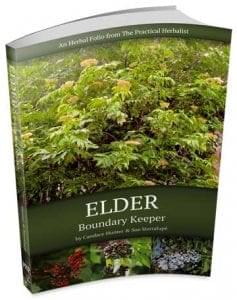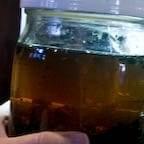Balm of Gilead is a powerful antimicrobial herb. It refers to a common name for 2 separate plants. The tree that this resinous medicine comes from is up for debate. It could either be from the resin of the pistachio tree (Pistacia lentiscus) or from the Arabic Balsam Tree (Commiphora gileadensis). Scholars will have to duke that out. For those of us living in the Americas, Balm of Gilead refers to the buds of three of the species of polar trees (Populus species). These are the Eastern cottonwood (Populus deltoides), Fremont’s cottonwood (Populus fremontii), and Black cottonwood (Populus nigra).
The buds from these trees are very resinous and fragrant. The tree is preserved to feed endangered Monarch butterfly larva. Bees collect the resins of cottonwood buds to convert into propolis in order to protect their hives from bacteria and viruses. This resin is helpful for humans too. High in volatile oils, Balm of Gilead is a reliable remedy for arthritis, inflammation, and skin conditions such as eczema and psoriasis.
Balm of Gilead oil is an easy to make and easy to use herbal remedy for a host of skin issues. It’s antimicrobial properties are vast. Normally, an herbalist will collect the cottonwood buds, place them in a jar and top them with an oil that absorbs easily into the skin. If an herbalist needs the infused oil that day, a heated oil infusion technique is used. If there is no immediate need, a cold oil infusion technique is employed.
Balm of Gilead lends its antimicrobial properties not just to the oil user but to the oil itself. The bud holds tightly to its resin. Some warmth is needed to allow the oil base to absorb the cottonwood resin but herbalists notice that it is still potent after straining out the marc. Both fresh and/or dry Balm of Gilead buds can be used for in this technique but fresh will last the longest and make the highest quality infused oil.
Herbalist Patti Leahy likes to make the most use of the gifts from our plant healers. She teaches that when using Balm of Gilead oil, leave the cottonwood buds in the oil and refresh the oil when the reserve gets low. With this technique, this infused oil can be revived for up to 4 years after the buds are initially picked. Check the oil monthly for potency and discard it any spoilage is noted. As with any botanical product, be sure to mark the name and date that the product was made. Safety first!







